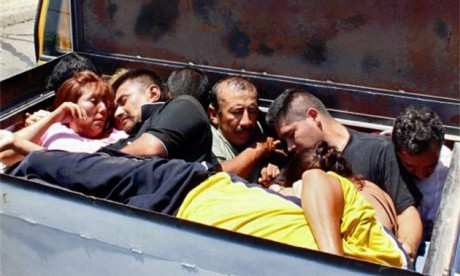One of the most distressing elements of the worldwide migrant crisis is that people who have risked all for a better life should be held to ransom by smugglers.
The lines between migration and human trafficking all too easily converge. While migration implies a level of individual choice, migrants are sometimes detained and even tortured by the people they pay to lead them across borders.
Following the cash across borders – through a network of kingpins, spotters, drivers and enforcers – is central to understanding how this opaque and complex business works.
Everyone agrees there is not enough data. No one knows how many migrants are smuggled.
However, enough is known about the money paid – by Eritreans, Syrians, Rohingya, and Afghans, among others – to demonstrate it is a multimillion-dollar business.
As Europe debates measures ranging from military attacks to destroying smugglers’ boats to increasing asylum places, what more can be done to prosecute those profiting at the crossroads of dreams and despair?
How much do migrants pay?
The cost varies depending on the distance, destination, level of difficulty, method of transport (air travel is dearer and requires fake documents) and whether the migrant has personal links to the smugglers, or decides to work for them.
The UN Office on Drugs and Crime (UNODC) says journeys in Asia can cost from a few hundred dollars up to $10,000 (£6,422) or more.
For Mexicans wanting to enter the US, fees can run to $3,500, while Africans trying to cross the Mediterranean can pay up to $1,000, and Syrians up to $2,500.
Abu Hamada, 62, a Syrian-Palestinian refugee, reckons he has earned about £1.5m ($2.3m) over six months by smuggling people across the Mediterranean from Egypt.
A place on a boat from Turkey to Greece costs between €1,000 and €1,200(£700 and £840), say migrants. Afghans pay between €10,000 and €11,000 to get to Hungary, which includes help from smugglers. Continue reading
Sources
- Clár Ní Chonghaile is a freelance reporter based in London. She has worked as a journalist in Paris, Madrid, London, Abidjan, Dakar and, most recently, Nairobi. The article above is from The Guardian.
- Image: bitlanders
